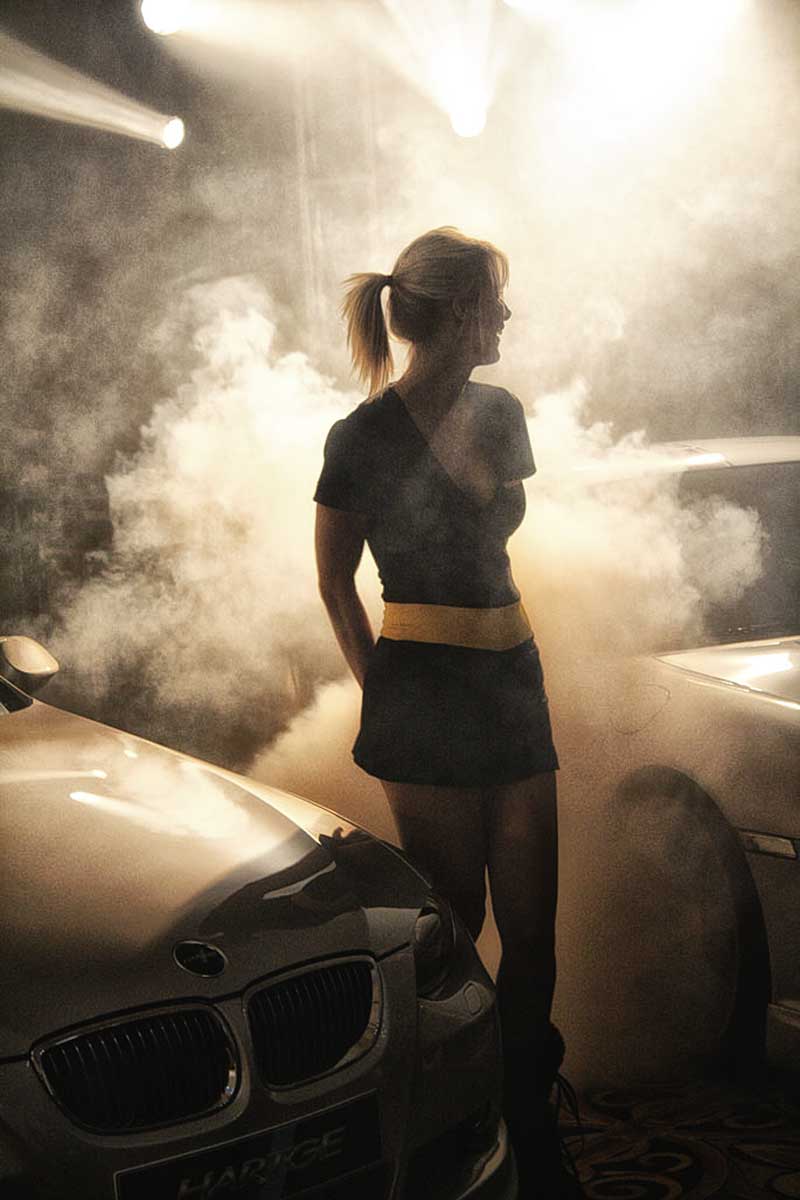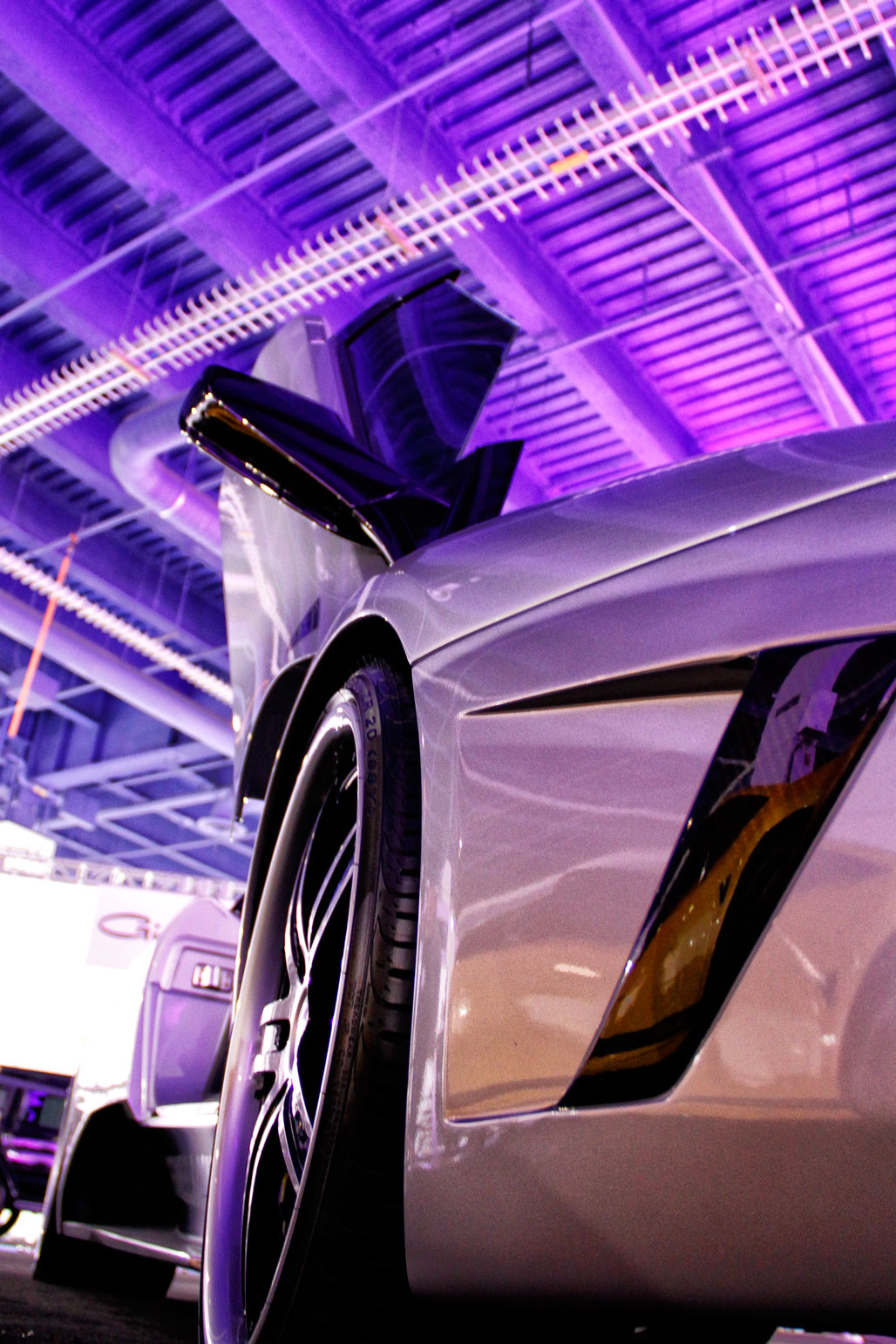Today’s Post by Joe Farace
“All of those cars were once just a dream in somebody’s head.”- Peter Gabriel
 Other than my local—weather or not—Vehicle Vault Espresso & Exhaust car show, there are not many outdoor car show left on my local calendar. So I wanted to share some thoughts on shooting cars at indoor shows. And since SEMA is right around the corner (November 5-8) I thought today’s post should feature a few images from past shows, even if the cars themselves are less front and canter and are more subdued than normal.
Other than my local—weather or not—Vehicle Vault Espresso & Exhaust car show, there are not many outdoor car show left on my local calendar. So I wanted to share some thoughts on shooting cars at indoor shows. And since SEMA is right around the corner (November 5-8) I thought today’s post should feature a few images from past shows, even if the cars themselves are less front and canter and are more subdued than normal.
Here’s a Few Tips
Next to your camera, the most important thing that you should bring to a car show is extra memory cards. This may contradict some advice a guest post offered last week but bringing extra SD cards takes less space than schlepping another camera. But then again if you are being paid to photograph the show, you really need to have a backup camera and lenses too.
You might want to bracket some shots. That’s because exposure is even more tricky when shooting indoors than outside. I typically bracket in one-third stops using aperture-preferred mode to maintain consistent depth-of-field, One or more of the three shots I make is always usable.
In fact, you should keep in mind one of Farace’s Law of exposure when photographing cars: Be sure to slightly overexpose white and light colored cars and underexpose black or dark colored ones.
How I Made this Shot: A few years ago at SEMA some company had the bright idea of having a party featuring nice cars and pretty models and then filled the whole room up with smoke! Shot with a Canon EOS Rebel Xs and EF-S 18-55mm f/3.5-5.6 IS lens with an exposure of 1/25 sec at f/5.6 and ISO 800. This image used the AWB color balance and when I tried to correct it in Photoshop, I liked the warmer tone better.
I shoot most cars in color but will sometimes use the camera’s black and white mode to produce monochrome images to give the image a vintage look. Color or Monochrome? Can’t make up your mind? Put the camera in monochrome mode and shoot it in RAW+JPEG and make that decision later. Of course you can just shoot in color and convert to monochrome later in the digital darkroom if that fits your workflow better.
 Be sure to make some images of parts of cars. Don’t be frustrated by the lack of space and crowded conditions you may encounter at indoor shows. Use this to your advantage by finding small details, such as close-ups of a car’s grille or the sensuous lines of a street rod’s fender and capture them in sharp focus.
Be sure to make some images of parts of cars. Don’t be frustrated by the lack of space and crowded conditions you may encounter at indoor shows. Use this to your advantage by finding small details, such as close-ups of a car’s grille or the sensuous lines of a street rod’s fender and capture them in sharp focus.
That’s why I like to use wide-angle zooms that let me get close and fill up the frame with part or even the entire car while eliminating distractions. I start by working in close and gradually back off the zoom lens focal length until extraneous details start to appear in the frame, then I prefer to crop them out—in camera. A low angle like the shot at right also helps to simplify the background or in this case, make it more interesting.
How I Made this Shot: For this image I ignored color correcting the image and instead used the color that was SOOC. Camera was a Canon EOS 7D with EF-S 18-135mm f/3.5-5.6 IS (at 18mm) with an exposure of 1/6 sec at f/3.5 and ISO 1250.
 If you liked this post and enjoy visiting this blog, you can show your appreciation by buying me a cup of Earl Grey tea ($2.50) by clicking here or, if you prefer, you can just click on Contact and offer a simple “thank you.”
If you liked this post and enjoy visiting this blog, you can show your appreciation by buying me a cup of Earl Grey tea ($2.50) by clicking here or, if you prefer, you can just click on Contact and offer a simple “thank you.”
Along with photographer Barry Staver, Joe is co-author of Better Available Light Digital Photography with new and used copies available on Amazon for $21.50, as I write this.